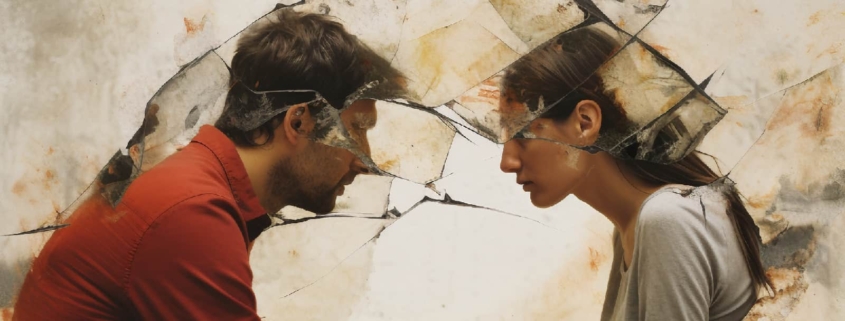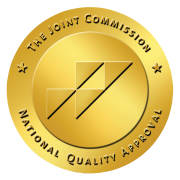Trauma Bonding: The Invisible Chains of Pain
We humans are capable of a lot of contradictions. Our experiences of love, pain, mistakes, and redemption all come with varying degrees of the full spectrum of life. Sometimes those contradictions are difficult to explain, let alone understand. When we are drawn again and again into our toxic relationships, causing pain after pain, there is a chance you are experiencing trauma bonding.
Understanding Trauma Bonding
Trauma bonding isn’t your usual high school crush or a fleeting romantic phase. It’s an intense, emotional connection developed with someone who alternates between kindness and mistreatment. Said plainly, it’s when someone forms a strong emotional connection with another person who treats them badly or hurts them.
They might get mixed signals of kindness and mistreatment or joy and pain, but ultimately it’s like being stuck in a relationship you know is bad for you, but you can’t seem to leave.
Interesting statistics have surfaced about this concept:
- According to a study conducted by the Journal of Interpersonal Violence, around 18% of women in domestically violent relationships have reported significant symptoms of trauma bonding.
- Another study from the Journal of Traumatic Stress indicates that individuals in trauma-bonded relationships are three times more likely to suffer from depression, anxiety, and even PTSD.
Why Do We Trauma Bond?
At a basic psychological level, trauma bonding occurs due to a powerful mixture of intermittent reinforcement, paired with the human need for connection. People are wired to bond with those around them; it’s a survival mechanism. And when you’re shown love, even if it’s sprinkled with doses of mistreatment, the brain releases a cocktail of chemicals, like oxytocin and dopamine. These feel-good chemicals can confuse the mind, making the bad times seem not so bad, especially when a kind gesture follows them.
Add to that the principle of intermittent reinforcement—a cycle of unpredictable rewards and punishments. Within the unpredictability, every positive gesture, even if it’s rare, feels like a jackpot win at a casino, making the person crave more. This unpredictability, combined with our inherent need to make sense of our environment, can trap a person in a loop, always seeking the reward of a kind moment, no matter how fleeting.
Signs of Trauma Bonding
If we’re honest, most of us have seen our share of unhealthy relationships. We allow a little too much in certain circumstances. And some of this can be okay in life’s complexity. But how do you recognize if it’s too much? What if you’re experiencing trauma bonding? Here are some potential signs:
- Intense emotional connection: Despite the emotional or physical abuse, there’s an unexplainable pull towards the abuser.
- Justifying abusive behavior: The victim often makes excuses for the perpetrator’s behavior.
- Isolation: Victims gradually distance themselves from friends and family, usually under the influence of the abuser.
- Inconsistent affection: The abuser alternates between abusive behavior and kind gestures, creating a powerful loop of reinforcement.
- Denial: The victim may not acknowledge the extent of the mistreatment or even deny it altogether.
It’s this kaleidoscope of emotions, of intense highs and lows, that makes trauma bonding such a complex and enthralling trap.
Breaking the Bonds of Trauma
Trauma bonding is not a disorder, more like a complex psychological response that arises when individuals form deep attachments in abusive or harmful situations. Often, this bonding leads individuals to stay in toxic relationships, even when onlookers believe it’s clear they should leave.
We must always understand that individuals caught in the grip of trauma bonding are navigating a challenging emotional terrain. It’s a manifestation of the human drive for connection and safety. As such, no one should feel shame for seeking solace and connection, even if it emerges from challenging circumstances.
We all navigate our storms in unique ways, and understanding, rather than judgment, paves the path to healing.
Seeking professional help, through therapy or counseling, can serve as a vital lifeline for many. It provides a sacred sanctuary where one can unravel the intricate web of emotions and delve into the depths of understanding. Through this process, victims can address and make sense of the roots of trauma bonding.
And remember, healing isn’t just about confronting the external but also about nurturing the internal. Through acts of self-care, be it meditation, journaling, or indulging in passions, we can fortify our self-worth and muster the strength needed to truly break free.
Trauma bonding isn’t just about the clutches of an abusive relationship. It’s about the resilience of the human spirit, the undying hope that dwells within us, urging us to break free and find love and light.
Seek Healing at Lido Wellness Center
If you or someone you love is ensnared in the chains of trauma bonding, there’s hope and help available. At Lido Wellness Center in Newport Beach, compassionate professionals are ready to guide you towards healing and freedom. Don’t wait. Call 949-541-8466 today.




